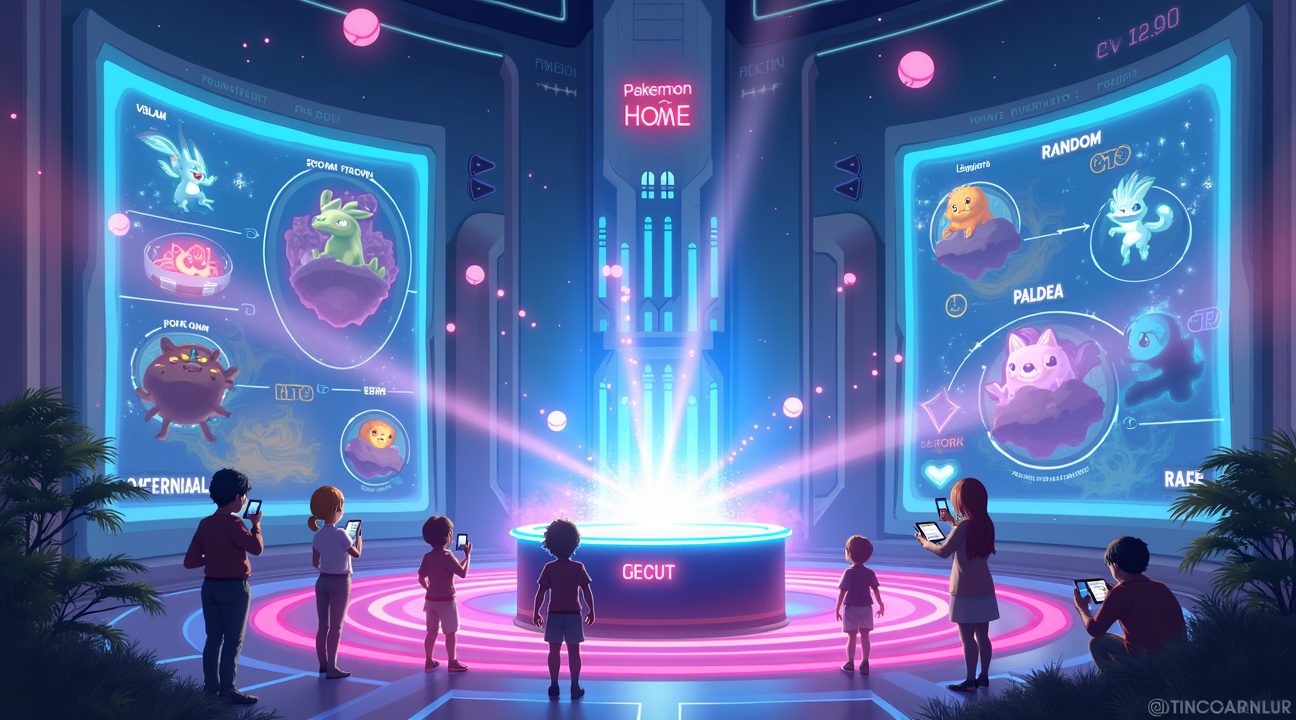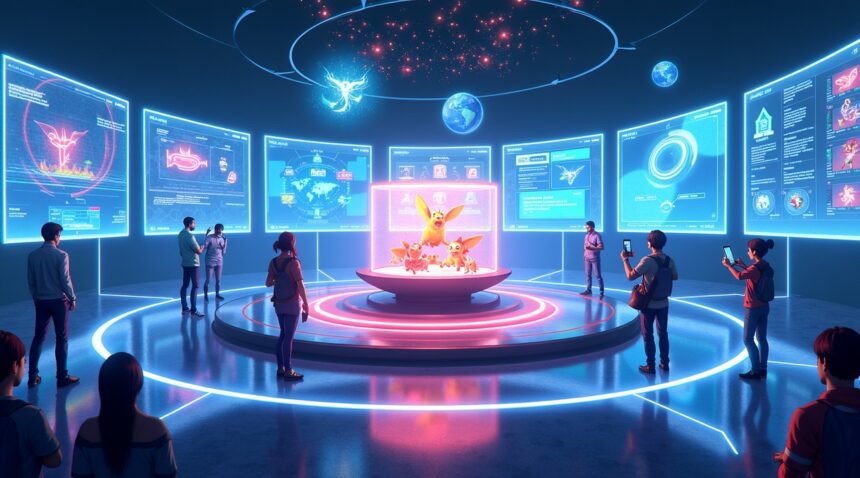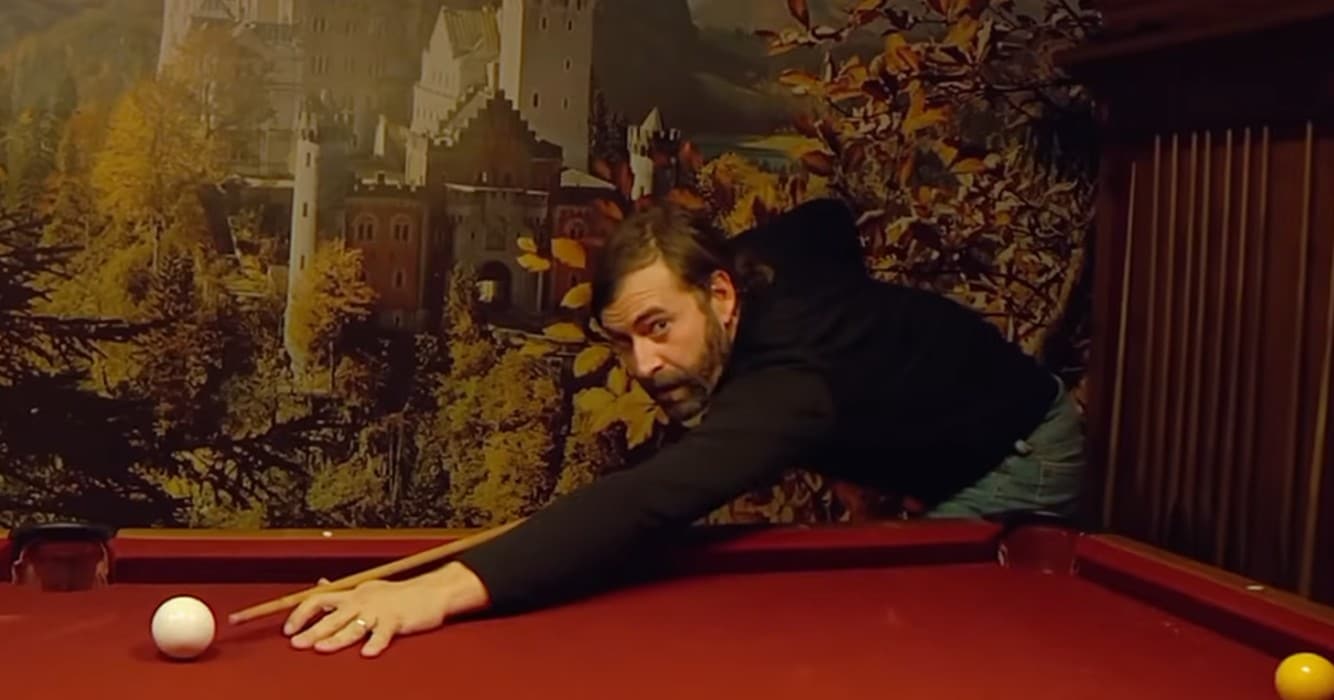Pokemon HOME established itself as the primary trading platform in 2025, completely replacing the original Global Trade Station with a centralized ecosystem that links multiple Pokemon titles under one infrastructure.
The 2025 Pokemon World Championships’ record $2 million prize pool demonstrated just how essential modern trading systems have become for competitive gameplay. Meanwhile, fan communities have continued to fill gaps left by Nintendo’s server shutdowns through the development of dedicated trading networks.
Key Takeaways
- Pokemon HOME’s Wonder Box and Room Trade features offer randomized trading experiences that differ significantly from the original GTS’s precise search-and-deposit system.
- The 2025 World Championships highlighted trading as essential infrastructure for competitive preparation, showcasing how players utilize cross-generational transfers to create tournament-ready teams.
- Fan-created trading networks have emerged to replace Nintendo’s discontinued Wi-Fi Connection servers, maintaining community-driven alternatives alongside official systems.
- Diamond and Pearl’s original GTS processed millions of trades monthly at its peak, cementing global Pokemon trading as a core franchise element.
- Current trading trends show high demand for legendary Pokemon, event exclusives, and competitively viable regional variants based on collection goals and competitive formats.
The Evolution to a Centralized Trading Platform
The shift from individual game servers to Pokemon HOME represents one of the most significant infrastructure transitions in gaming history. Nintendo consolidated all trading activity into a single platform capable of supporting every major Pokemon title from Generation 6 and beyond. This streamlined system means players no longer need to manage multiple friend codes across different games.
New Trading Mechanics in Pokemon HOME
Wonder Box and Room Trade
Pokemon HOME’s Wonder Box feature introduces a level of randomness that the original GTS never offered. In this system, players deposit Pokemon without knowing what they’ll receive in return. While this encourages discovery and excitement, it lacks the precision that competitive players often seek. Room Trade offers a balance by letting groups preview all available Pokemon before selecting their trades.
Impact on Competitive Play
Competitive players greatly benefit from the ability to trade across generations. Preparing for tournaments often requires transferring specific Pokemon with unique movesets—some only available in older games—into modern formats. This functionality dramatically cuts down the time needed for breeding and training.
Community-Driven Alternatives
Fan communities took action when Nintendo ended Wi-Fi Connection support for older titles. Projects like Wiimmfi and AltWFC have effectively recreated legacy trading environments. These community-run servers continue to process thousands of trades each month using the original GTS interfaces in games like Diamond and Pearl, demonstrating players’ dedication to traditional exchange methods.
Trading Patterns and Player Priorities
The original GTS in Diamond and Pearl allowed players to filter trades by species, level, and target conditions, which made completing the Pokedex or obtaining version exclusives much easier. Many longtime fans still regard it as the pinnacle of Pokemon trading functionality.
Modern trading methods show a shift in player focus:
- Legendary Pokemon and Shiny versions remain among the most desired assets in trades.
- Event-only Pokemon carry high trading value due to limited-time availability.
- Regional variants introduced in games like Scarlet/Violet and Legends: Arceus have created new demand among collectors and competitive players.
Competitive Infrastructure and Economic Impact
The $2 million prize pool at the 2025 Pokemon World Championships underscored how critical trading infrastructure is to professional preparation. Many teams rely on quickly acquiring multiple versions of the same Pokemon to test various builds. Having access to Pokemon with specific breeding traits or hidden abilities can be a deciding factor for qualification.
Additionally, the demand for top-tier Pokemon has fueled a growing market for competitive services. Some breeders specialize in crafting Pokemon with perfect IVs or rare variants, offering trades to help others optimize their competitive lineups. These breeders often maintain extensive databases of Pokemon specifically for trade purposes.
Subscription Model and Accessibility
Pokemon HOME’s tiered subscription model has a tangible influence on trading capacity. Free users are subject to storage limitations and restricted trading features, while premium subscribers benefit from expanded storage and additional trading options. As a result, serious players frequently invest in premium plans to maintain trading efficiency.
Mobile Integration and Trade Convenience
One of Pokemon HOME’s biggest shifts lies in its mobile integration. Players now initiate trades on the go—from a train ride or lunch break—rather than being limited to a console session. Push notifications keep users informed about Wonder Box completions, reinforcing frequent engagement even outside of gameplay.
Security and Integrity of Trades
Pokemon HOME improved upon previous systems with the introduction of strong security features. It includes hack detection to prevent illicit Pokemon from entering the system and maintains trade logs to allow users to monitor their trading history. These safeguards promote fairness and transparency in exchanges, reducing the risk of fraudulent trades.
The Road Ahead
Trading in the Pokemon universe is poised for continued evolution. As upcoming titles introduce new regions, species, and mechanics, the centralized architecture of Pokemon HOME ensures that it remains adaptable and compatible. This solid foundation will allow trading to grow as both a social interaction tool and a competitive edge for years to come.
Pokemon HOME and Wonder Box: How Modern Trading Has Evolved Beyond the Original GTS
Pokemon HOME has fundamentally transformed how trainers exchange their creatures in 2025, serving as the central hub for trades across multiple generations and titles. Unlike the original Global Trade Station, which operated within individual games, this platform creates a unified ecosystem that connects every compatible Pokemon title under one roof.
Enhanced Trading Features and Security Measures
The Wonder Box represents one of the most significant innovations in modern Pokemon trading. This feature allows trainers to deposit Pokemon and receive random trades from players worldwide, creating an element of surprise that wasn’t possible with the original GTS’s search-and-deposit system. Room Trade functionality takes this concept further by enabling group trading sessions where multiple trainers can participate simultaneously.
Security improvements mark a clear advantage over the classic system. Pokemon HOME implements stronger filters that help prevent common scams and illegitimate Pokemon from circulating through trades. These protective measures give trainers more confidence when exchanging valuable creatures, especially when dealing with competitive Pokemon or rare specimens.
The platform’s cross-generational compatibility proves particularly valuable as Pokemon Scarlet and Violet continue to maintain relevance alongside newer releases. Trainers can move Pokemon between different generations and access a much larger trading pool than any single-game system could provide.
However, the evolution hasn’t satisfied all trainer preferences. Many players express frustration with the loss of granular search functions that made the original GTS so precise for finding specific Pokemon. The ability to search for exact specifications like level ranges, specific moves, or particular forms created a more targeted trading experience that some miss dearly.
Third-party communities have emerged to fill gaps in the official system. Discord servers, Reddit communities, and specialized websites create spaces where trainers can arrange specific trades that might be difficult to accomplish through HOME’s randomized systems. These platforms often facilitate trades for competitive play preparation or rare Pokemon collection.
The centralized approach has shifted trading culture significantly. Instead of the immediate, direct exchanges possible through the original GTS, modern trading often requires more patience and luck, especially when using randomized features. This change has created a more casual trading environment that some trainers appreciate, while others prefer the direct control of traditional methods.
Current developments suggest that future Pokemon titles will continue building upon HOME’s foundation rather than returning to individual game-based systems. This approach ensures consistency across the franchise while maintaining the cross-generational connectivity that has become essential for serious collectors and competitive players. The platform continues evolving with each major release, adapting to new Pokemon and gameplay mechanics while maintaining its role as the franchise’s primary trading infrastructure.

The $2,000,000 World Championships: How Trading Powers Competitive Pokémon in 2025
The 2025 Pokémon World Championships in Anaheim, California delivered something unprecedented: a record-breaking $2,000,000 prize pool that highlighted trading’s essential role in competitive preparation. Players couldn’t simply rely on random encounters or tedious breeding cycles when millions of dollars hung in the balance.
Pokémon HOME emerged as the backbone of competitive team building throughout the championship season. Competitors leveraged its electronic trading infrastructure to rapidly exchange crucial Pokémon, test different combinations, and fine-tune their strategies across multiple supported titles. The streamlined transfer system eliminated bottlenecks that historically plagued competitive preparation.
Trading as Strategic Infrastructure
Professional players treated trading networks like essential tools rather than casual conveniences. Teams used these systems to access region-locked Pokémon, obtain specific moves through transfer mechanics, and secure optimal IV spreads without spending months breeding. This approach transformed competitive preparation from a time-intensive grind into a strategic resource allocation challenge.
The championship format itself reinforced trading’s importance through several key factors:
- Cross-generation team building requirements that demanded Pokémon from multiple titles
- Limited preparation windows between format announcements and tournament dates
- Regional availability restrictions that forced international collaboration
- Move compatibility issues requiring specific transfer chains
Electronic infrastructure proved its worth during the championship’s qualification period. Players who mastered Generation 9 competitive formats could quickly adapt their strategies using traded Pokémon from previous generations. This flexibility separated top-tier competitors from those still grinding for basic team components.
The integration between official and fan-supported trading platforms created an ecosystem where accessibility met competitive integrity. Nintendo’s enhanced verification systems prevented illegal modifications while maintaining rapid exchange speeds. Community-driven tools filled gaps in official functionality, creating comprehensive support for serious competitors.
Beyond professional play, the championship’s massive prize pool attracted casual players who wanted to participate in high-level formats. Trading accessibility allowed these players to experiment with competitive strategies without investing hundreds of hours in preparation. This democratization effect strengthened the competitive scene’s foundation.
The 2025 championships proved that Pokémon Scarlet and Violet maintained their competitive relevance through robust trading integration. Players could seamlessly incorporate Pokémon from across the franchise’s history, creating team compositions that would have been impossible in previous championship formats. Electronic trading infrastructure didn’t just support competitive play—it fundamentally reshaped how players approach team building at the highest levels.
When Nintendo Pulled the Plug: The End of Original GTS Servers and Rise of Fan Communities
I remember when trading Pokémon felt like stepping into a digital marketplace filled with endless possibilities. Generations IV and V revolutionized how players connected through the Global Terminal system, strategically placed in major in-game cities like Jubilife City and Castelia City. Players could deposit Pokémon, specify what they wanted in return, and wait for someone across the globe to complete the exchange. The system transformed isolated gaming experiences into a worldwide community venture.
The Infrastructure Collapse and Community Response
Nintendo’s decision to shut down the Wi-Fi Connection servers marked the end of an era for millions of trainers. This infrastructure change effectively severed access to the original GTS services, leaving dedicated players without their primary trading hub. However, this setback sparked something remarkable in the Pokémon community.
Fan-created trading networks emerged almost immediately to bridge this gap. Platforms like PokemonGTS.com became lifelines for players who refused to let their trading dreams die. These community-driven solutions demonstrated the passionate dedication that defines Pokémon’s staying power in gaming culture. Players developed workarounds, created alternative servers, and built comprehensive databases to maintain the trading ecosystem that Nintendo had abandoned.
Modern Adaptations and Nostalgic Tributes
Game Freak acknowledged this community need when designing newer titles. Brilliant Diamond and Shining Pearl introduced the Global Wonder Station, which served as both a functional trading system and a nostalgic nod to the original GTS experience. This feature adapted the classic concept for modern infrastructure while preserving the core excitement of global trading.
The evolution from Global Terminal to Wonder Station reflects how competitive Pokémon culture has influenced development decisions. Fan-run sites continue thriving alongside official systems, offering specialized services that cater to collectors seeking rare distributions or players hunting for specific competitive builds.
These community platforms maintain:
- Detailed databases of legacy events
- Custom trading protocols
- Safe spaces for nostalgic players
Many sites offer enhanced features that surpass the original GTS limitations, including:
- Better search functions
- Fraud protection systems
- Real-time trade negotiation tools
The persistence of these fan communities proves that player-driven innovation often fills voids left by corporate decisions. While official systems continue evolving, the grassroots networks born from the original GTS shutdown remain vital components of the broader Pokémon trading landscape.
https://www.youtube.com/watch?v=o3A4yJAHkcg

Diamond and Pearl’s Revolutionary 10 Million Copy Trading Boom
I can’t overstate how dramatically the Global Trade Station transformed the Pokémon franchise when it debuted in Diamond and Pearl during 2007. This groundbreaking feature connected players worldwide through the Nintendo Wi-Fi Connection, creating the first truly global Pokémon trading ecosystem. The impact was immediate and measurable – these games became some of the fastest-selling entries in the series, reaching over 10 million copies that same year, with the excitement around global trading capability playing a significant role in their success.
Breaking Down Geographic Barriers
The asynchronous trading system introduced a game-changing approach that I’ve seen reshape how players think about Pokémon collection. Rather than requiring both trainers to be online simultaneously, the GTS allowed users to deposit their Pokémon with specific requests, then walk away while the system worked in the background. This meant a trainer in Japan could offer a Dialga for a Palkia, and someone in Europe could complete that trade hours later without any coordination needed.
This innovation eliminated the regional constraints that had previously limited trading to local communities or organized online forums. Suddenly, version-exclusive Pokémon became accessible to everyone, and rare species could flow freely across continents. The system fundamentally changed game design philosophy too, as developers could now create more diverse regional distributions knowing that global trading would help players complete their collections.
Reshaping Player Interaction and Collection Strategies
The GTS didn’t just facilitate trades – it created entirely new player behaviors and strategies. I’ve observed how it encouraged players to catch multiple copies of rare Pokémon, turning hunting into a more systematic activity. The knowledge that any Pokémon could potentially be traded globally made players more adventurous in their exploration and collection efforts.
The system also democratized access to competitive Pokémon, allowing casual players to obtain properly trained specimens from dedicated breeders worldwide. This shift influenced how players approached both casual collection and competitive play, creating a more interconnected community than ever before. The success of Diamond and Pearl’s trading revolution set the foundation for every subsequent Pokémon game, proving that global connectivity wasn’t just a nice feature – it was essential to the modern Pokémon experience.
Millions of Monthly Trades: When GTS Ruled Console Gaming
At its peak, the Global Trade System facilitated millions of trades each month, establishing itself as one of the most active online services across all console gaming platforms. This remarkable trading volume positioned Pokemon’s GTS alongside major multiplayer networks, demonstrating the incredible appeal of cross-regional Pokemon exchanges.
Trade Statistics and Popular Pokemon
The official GTS website provided real-time data that revealed fascinating insights into player behavior and trading patterns. Geographic statistics showed trading activity spanning continents, with peak hours varying by region as players coordinated exchanges across time zones. Most-traded Pokemon consistently included several key categories that drove the system’s popularity.
- Legendary Pokemon dominated trade requests, with players seeking rare encounters to complete their Pokedex collections.
- Regional exclusives generated substantial trading activity as collectors attempted to obtain Pokemon unavailable in their geographical areas.
- Event rewards created time-sensitive trading spikes, particularly when limited-time distributions concluded and players scrambled to acquire missed opportunities.
- High-stat starter Pokemon also commanded significant interest, especially those with competitive movesets or perfect Individual Values.
These trades often involved serious collectors and competitive players who understood the value of properly trained Pokemon for competitive play scenarios.
System Limitations and Community Impact
Despite its tremendous success, the GTS experienced several limitations that affected user experience.
- Bugs affecting trade evolutions occasionally prevented certain Pokemon from completing their evolutionary transformations properly after trades.
- Connection stability issues sometimes interrupted trades mid-process, leaving players frustrated with incomplete exchanges.
- Search functionality limitations made finding specific Pokemon with desired characteristics challenging, particularly when players sought Pokemon with specific natures, abilities, or movesets.
The system’s inability to filter by these detailed characteristics often resulted in tedious browsing through countless listings.
These early challenges directly influenced improvements in subsequent Pokemon games, with developers incorporating user feedback to refine trading mechanics. The dedicated international player base that emerged from GTS usage helped shape future trading features, creating a foundation for both casual collecting and serious competitive breeding that continues to influence modern Pokemon games today.
The GTS legacy established trading as a core component of the Pokemon experience, proving that players valued connectivity and collaboration beyond simple battles. This community-driven approach to Pokemon collection and exchange became fundamental to the franchise’s long-term appeal.
Legendary Wishlist Trends: What Players Are Trading for in 2025
Trading patterns across the Global Trade System reveal clear preferences among players who consistently prioritize legendary Pokémon, event-exclusive species, and regional variants in their wishlist selections. These high-value creatures command the most attention, generating significant trading volumes throughout 2025.
Event-exclusive Pokémon continue dominating the marketplace, particularly those distributed during limited-time celebrations or special tournaments. Players recognize these Pokémon’s role in maintaining collection completeness and often accept less favorable trade ratios to secure them. Regional variants from recent game releases also maintain strong demand, especially when they feature in competitive strategies or possess unique type combinations that standard forms lack.
Popular Trading Categories by Demand
Current trading data shows specific categories consistently attracting the highest interest levels:
- Shiny legendary Pokémon from recent raid events and special distributions
- Mythical Pokémon from time-limited giveaways and movie tie-ins
- Regional forms with competitive viability, particularly those featuring new type combinations
- Pokémon with special moves or abilities unavailable through standard gameplay
- Seasonal variants that align with current competitive formats
- Cross-generation transfers of popular legacy Pokémon
The introduction of new generations creates predictable spikes in trading activity, as players seek to complete their Pokédex entries and experiment with fresh team compositions. Generation 9’s competitive impact continues influencing which Pokémon maintain their trading value, with meta shifts directly affecting player priorities.
Competitive developments significantly shape trading preferences, as players adapt their collections to match current tournament formats and ranked battle strategies. Pokémon that excel in specific competitive environments often experience dramatic increases in trading demand, while those that fall out of favor see their market value decline accordingly.
Seasonal format changes trigger additional trading surges, particularly when restricted formats limit available Pokémon pools or when new rules emphasize previously overlooked species. These cyclical patterns create opportunities for traders who anticipate format shifts and position their collections accordingly.
Regional availability continues driving cross-border trading, with players actively seeking Pokémon unavailable in their geographic regions. This demand remains consistent regardless of game updates, as collectors pursue complete regional variant sets and competitive players access Pokémon with optimal movesets or abilities.
Player behavior patterns indicate growing sophistication in trading strategies, with many participants tracking market trends and timing their trades to maximize value. The community has developed informal pricing standards for various Pokémon categories, creating more predictable trading environments while maintaining flexibility for unique or particularly rare specimens.
The evolving nature of Pokémon Scarlet and Violet’s relevance contributes to sustained trading interest, as ongoing updates introduce new Pokémon, forms, and distribution events. These regular content additions ensure that trading demand remains active and that player collections require continuous updating.
Current trends suggest that players increasingly value Pokémon with competitive utility over purely collectible species, reflecting the community’s growing focus on battle-ready teams and tournament participation. This shift influences which legendary and mythical Pokémon maintain premium trading status, with battle-viable species commanding higher exchange rates than those primarily valued for collection purposes.
Market dynamics also respond to announcement cycles for upcoming games and events, with speculation driving demand for Pokémon likely to feature prominently in future releases. Forward-looking traders often accumulate species they anticipate will gain value, creating secondary markets for Pokémon not currently in high demand but expected to become relevant with future game developments.
Sources:
Ohepic – “Pokemon GTS: Diamond & Pearl’s Global Trading Revolution (2025)”
Bulbapedia – “Global Terminal”
Pokémon – “2025 Pokémon World Championships”
PokemonGTS.com
Nintendo World Report – “Pokémon Global Trade Station Website Launches”
PokeFarm – “Global Trade System (GTS) Thread”


